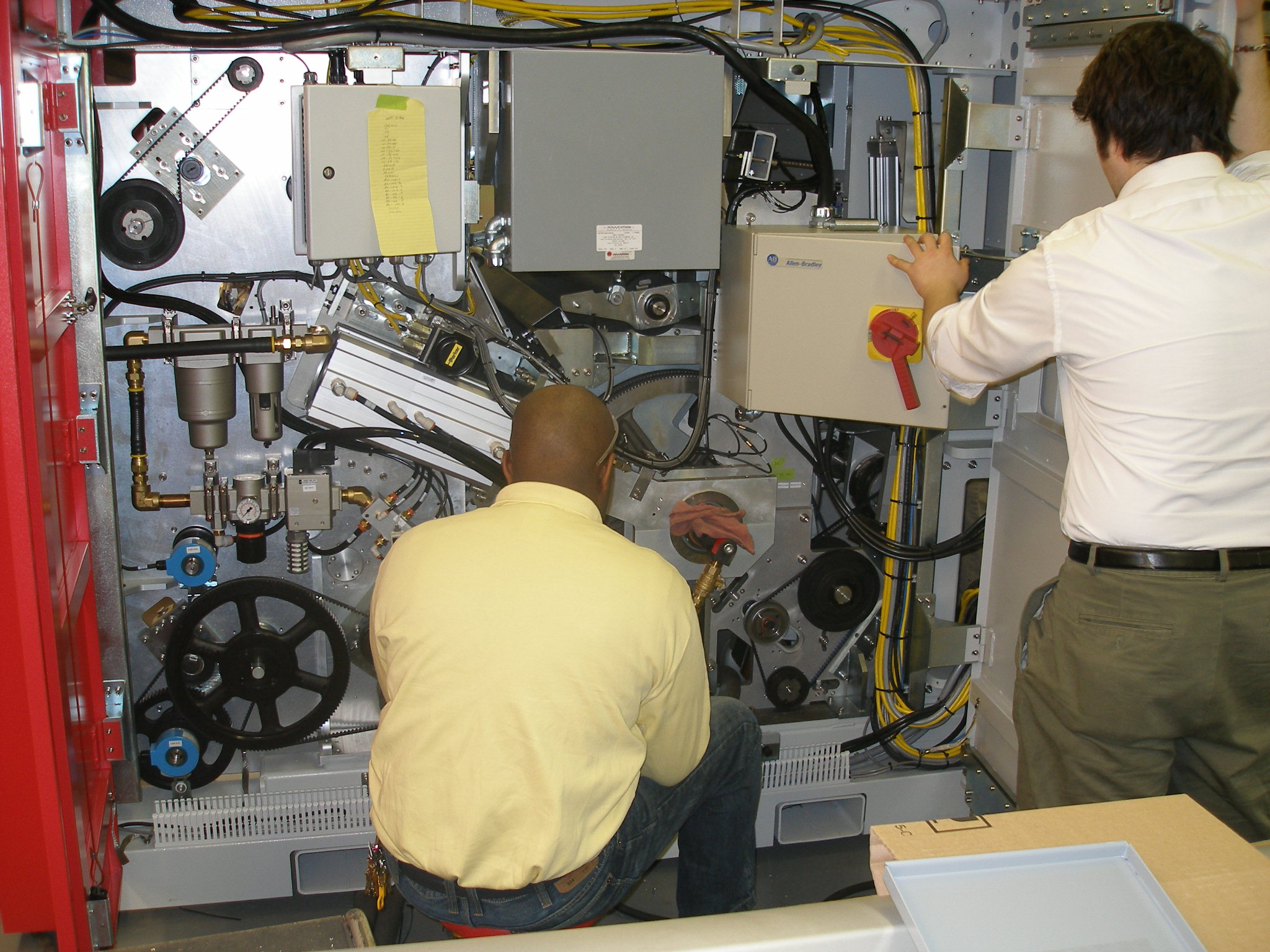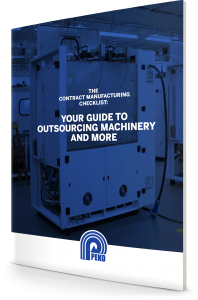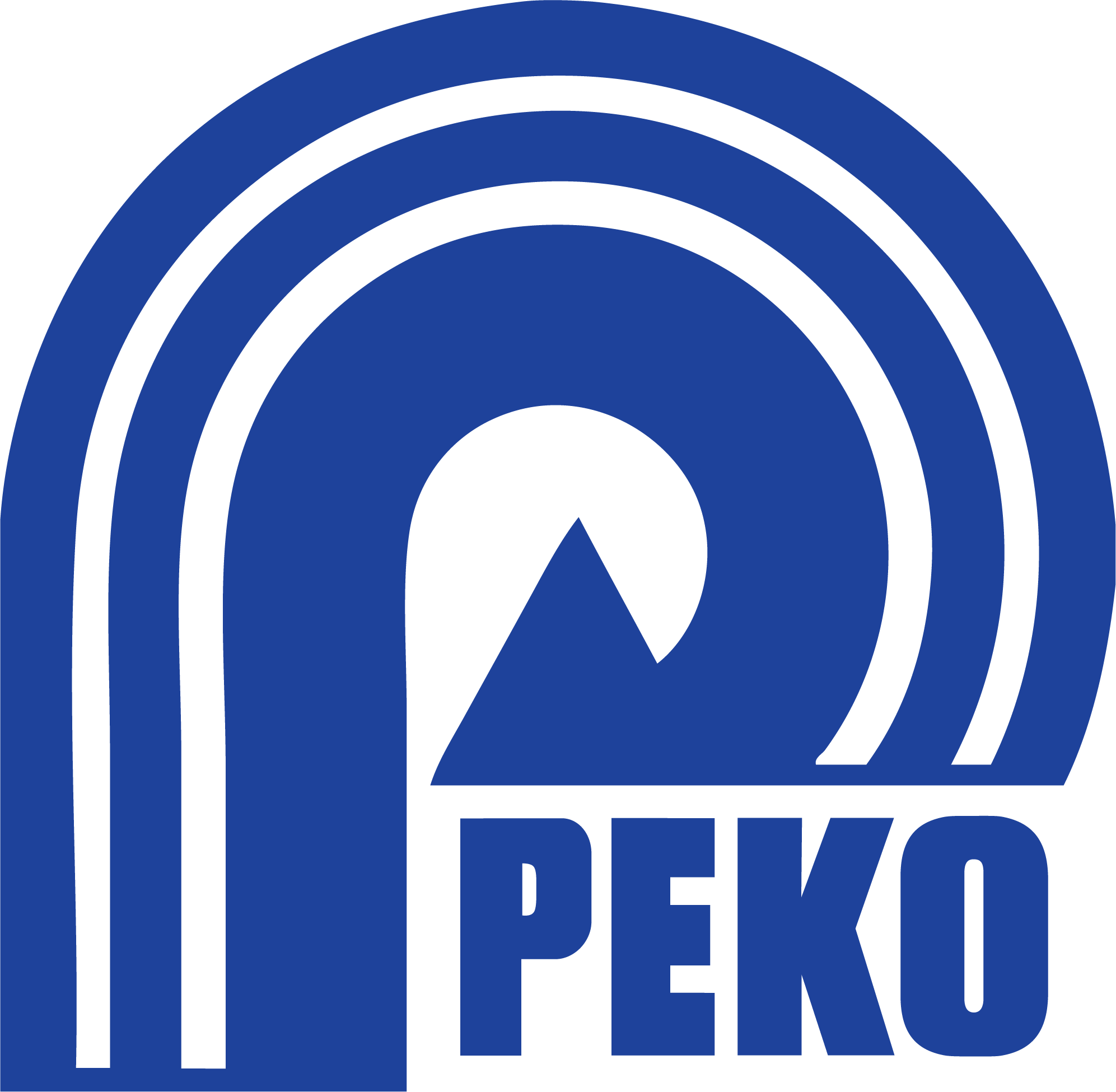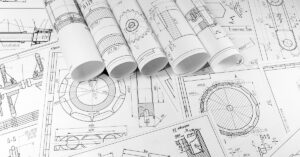
A contract manufacturing transfer is a high stakes move for OEM machine builders. The goal is simple but non-negotiable: protect quality, cost, delivery, and compliance while avoiding disruption to customers. The reality is tougher—long-lead components, incomplete documentation, and tribal knowledge can stall a production transfer if not addressed early. When executed well, a manufacturing transfer does more than avoid turbulence: it improves repeatability, diversifies supply, reduces risk, and prepares the program to scale. This guide outlines practical best practices to plan and execute a smooth contract manufacturing transfer with fewer surprises.
What is a Contract Manufacturing Transfer?
A contract manufacturing transfer—also called a manufacturing or production transfer—is the structured relocation of a product build from an in-house line or incumbent supplier to a new contract manufacturer. The objective is to replicate (and ideally improve) quality, cost, delivery, and regulatory conformity without impacting customers. For custom machinery and complex electromechanical assemblies, that means managing documentation, equipment, processes, validation, and people through a controlled, phase-gated approach.
Assessing Current Processes for a Contract Manufacturing Transfer
Effective manufacturing program transfer starts with a clear baseline. A structured assessment exposes risks and opportunities before they propagate into the new site.
Conduct a Comprehensive Audit
Build a current-state picture across:
- Product & Design Intent: Latest BOM, drawings, models, specs, critical features, tolerances, ECN/ECO history, and special processes.
- Manufacturing Workflows: Routings, takt time, work instructions, test procedures, tooling/fixtures, and station layouts.
- Quality Controls: PFMEA, control plans, capability targets, inspection methods, traceability, and nonconformance trends.
- Supply Chain: AVL, lead times, minimum order quantities, alternates, logistics rules, and consignment agreements.
- People & Skills: Operator qualifications, certifications, training records, and key tribal knowledge.
- Equipment & Facilities: Machine capability, calibration status, utilities, EHS requirements, and capacity constraints.
Use standardized audit checklists to ensure consistency and to feed the contract manufacturing transfer plan with facts, not assumptions.

Identify Bottlenecks & Challenges
Prioritize issues that will threaten the production transfer if left unresolved:
- Supply Interruptions: Single-source parts, long lead times, export controls, or allocation risk.
- Production Inefficiencies: Excessive WIP, low first-pass yield, rework loops, or poor fixture ergonomics.
- Technology Gaps: Outdated machinery, missing automation, or inadequate test coverage.
- Workforce Gaps: Specialized skills concentrated in a few individuals or undocumented methods.
Surface these early so corrective actions can be built into the manufacturing transfer plan.
Setting Clear Goals & Objectives for Your Contract Manufacturing Transfer
Clarity keeps the program aligned and measurable.
Define Success Criteria
Document quantifiable targets for the contract manufacturing transfer, such as:
- Quality: first-pass yield, DPPM/DPUs, process capability (e.g., Cpk), audit scores.
- Delivery: on-time delivery %, cycle time, ramp-to-rate milestones.
- Cost: target COGS, scrap/rework limits, labor hours per unit.
- Compliance: regulator or customer approvals, FAT/SAT pass criteria, IQ/OQ/PQ as applicable.
Tie each metric to the relevant phase gate.
Align Stakeholder Expectations
Synchronize objectives with internal teams, the incumbent supplier, the new contract manufacturer, customers, and regulators. Establish a communication plan with weekly operating reviews, RACI ownership, and escalation paths. Use feedback loops (with owners and due dates) to surface constraints early and prevent misalignment.
Establish a Realistic Timeline
Map milestones, dependencies, and buffers. Include training time, qualification builds, regulatory lead times, and long-lead materials. Build in contingencies to reduce schedule risk. Set clear entry/exit criteria for each phase to avoid scope creep.
Planning the Contract Manufacturing Transfer
Planning translates strategy into action. Treat the machinery manufacturing transfer like an NPI program with formal program management.
Develop a Detailed Project Plan
Your plan should cover:
- Scope & Deliverables: Units, variants, volumes, geographic scope, service spares, and documentation sets.
- Milestones & Dependencies: Phase gates, critical path items, and decision points.
- Resources: Cross-functional core team (engineering, quality, supply chain, production, test), facilities, and budget.
- Risk Management: Identified risks, owners, mitigation, and contingency triggers.
- Data Plan: What you will measure (KPIs), how you will capture it, and how it informs go/no-go decisions.

Select the Right Contract Manufacturer
Evaluate candidates against needs specific to your custom machinery:
- Relevant Experience: Build-to-print and build-to-spec, complex electromechanical systems, clean builds, and successful contract manufacturing transfer history.
- Capacity & Scalability: Demonstrated ability to ramp and flex capacity to meet demand.
- Quality System: ISO 9001; industry-specific systems like ISO 13485 or AS9100 when required; process validation discipline.
- Test & Verification: In-house functional test development, calibration, and data integrity.
- NPI & Engineering Support: Phase-gated NPI (DFM/DFA, pilot/qualification builds) with embedded engineers for bring-up and early ramp.
- Financial & Operational Stability: Long-term investment capability and supply chain leverage.
Request case studies of previous supplier transitions and pilot builds to validate claims.
Related reading: If you’re shortlisting partners for a contract manufacturing transfer, don’t miss our guide—Build to Print Manufacturing: What OEMs Should Ask Before Shortlisting a Machine Builder—a quick checklist to vet technical depth, quality systems, test coverage, and ramp-to-rate readiness before you issue RFQs.

Ensure Compliance & Regulatory Adherence
Map all applicable standards and approvals early (ISO, customer standards, FDA/CE as relevant). Maintain traceable records and plan internal/supplier audits to verify compliance. For regulated programs, define your validation strategy—IQ/OQ/PQ, software validation, and data integrity controls—and secure agreement on documentation with the notified body or authority.
Build Effective Communication Strategies
Structured, transparent communication reduces surprises.
- Scheduled Team Meetings: Define agendas, decisions, and owners.
- Status Updates: Highlight risks, blockers, and next actions.
- Digital Collaboration: Project management tools for tasks and timelines; real-time messaging for quick decisions; shared document repositories for single-source-of-truth.
Risk Management & Mitigation in a Contract Manufacturing Transfer
Proactive risk management protects schedule, quality, and cost.
Identify Potential Risks
Analyze risks across product, process, and supply chain:
- Complex tolerances or special processes.
- Long-lead or single-source components.
- Test coverage gaps and measurement system issues.
- Training or certification requirements.
- Facility readiness and EHS considerations.
Implement Contingency Plans
Prepare fallback options before you need them:
- Dual-source critical parts and qualify alternates.
- Safety stock/bridge builds to cover early ramp.
- Backup fixtures/testers and spares for high-utilization stations.
- Cross-functional SWAT teams for issue triage, MRB, and rapid ECN execution.
Monitor Progress & Adjust
Instrument the program with actionable KPIs:
- Schedule adherence, first-pass yield, defect Pareto, throughput, and Cpk at CTQs.
- Visual dashboards for leadership and shop-floor teams.
- Regular retrospectives to adjust plans based on data, not intuition.

Contract Manufacturing Transfer Checklist
Use this condensed list as the backbone of your internal readiness checklist:
- Business Case & Scope: Units, variants, forecast, target COGS, warranty strategy.
- Design & Documentation: Complete BOM, routings, work instructions, test procedures, packaging, ECN/ECO plan.
- Quality Plan: PFMEA, control plan, capability targets, inspection plan, measurement system analysis.
- Supply Chain: AVL validated, alternates for at-risk parts, logistics plan, consignment and inventory rules.
- Tooling/Fixtures: Availability, calibration, preventive maintenance, and spares.
- Pilot Builds: Defined entry/exit criteria, data capture, defect triage, and corrective action flow.
- FAT/SAT: Acceptance criteria, records, pass/fail authority for equipment where applicable.
- Validation (as applicable): IQ/OQ/PQ plan and documentation for regulated markets.
- Ramp Plan: Staffing, training, space, takt, and capacity model.
- Governance: Cadence, KPIs, escalation path, and risk register ownership.
How PEKO Executes Manufacturing Transfers
 PEKO applies a phased NPI-to-production model—often starting with Phase 0 to lock requirements and mitigate risk—followed by qualification builds and controlled ramp to rate. Each contract manufacturing transfer is led by formal program management with clear acceptance criteria before scale-up.
PEKO applies a phased NPI-to-production model—often starting with Phase 0 to lock requirements and mitigate risk—followed by qualification builds and controlled ramp to rate. Each contract manufacturing transfer is led by formal program management with clear acceptance criteria before scale-up.
Our Product Adoption approach uses qualification orders, documented transition plans, FAT/SAT where applicable, and disciplined change control to align cost, quality, and delivery as we establish steady-state production.
FAQs: Contract Manufacturing Transfer
What triggers a contract manufacturing transfer? Common triggers include capacity limits, cost reduction goals, supply-base diversification, quality improvements, or moving from prototype/pilot to serial production.
How long does a production transfer take? Timelines vary by product complexity and regulatory scope. Typical ranges run from a few months to a year, driven by documentation maturity, long-lead components, and validation needs.
Conclusion: Reliably Execute Your Contract Manufacturing Transfer
 A successful contract manufacturing transfer demands meticulous planning, disciplined communication, and data-driven decision making. By auditing the current state, setting measurable targets, selecting a capable contract manufacturer, managing risk, and validating through pilot and qualification builds, OEM machine builders can minimize disruption, safeguard compliance, and position programs to scale with confidence.
A successful contract manufacturing transfer demands meticulous planning, disciplined communication, and data-driven decision making. By auditing the current state, setting measurable targets, selecting a capable contract manufacturer, managing risk, and validating through pilot and qualification builds, OEM machine builders can minimize disruption, safeguard compliance, and position programs to scale with confidence.
If you’re planning a contract manufacturing transfer, download our Contract Manufacturing Guide to jump-start supplier due diligence when outsourcing machinery. Fill out the form below to receive your copy.








